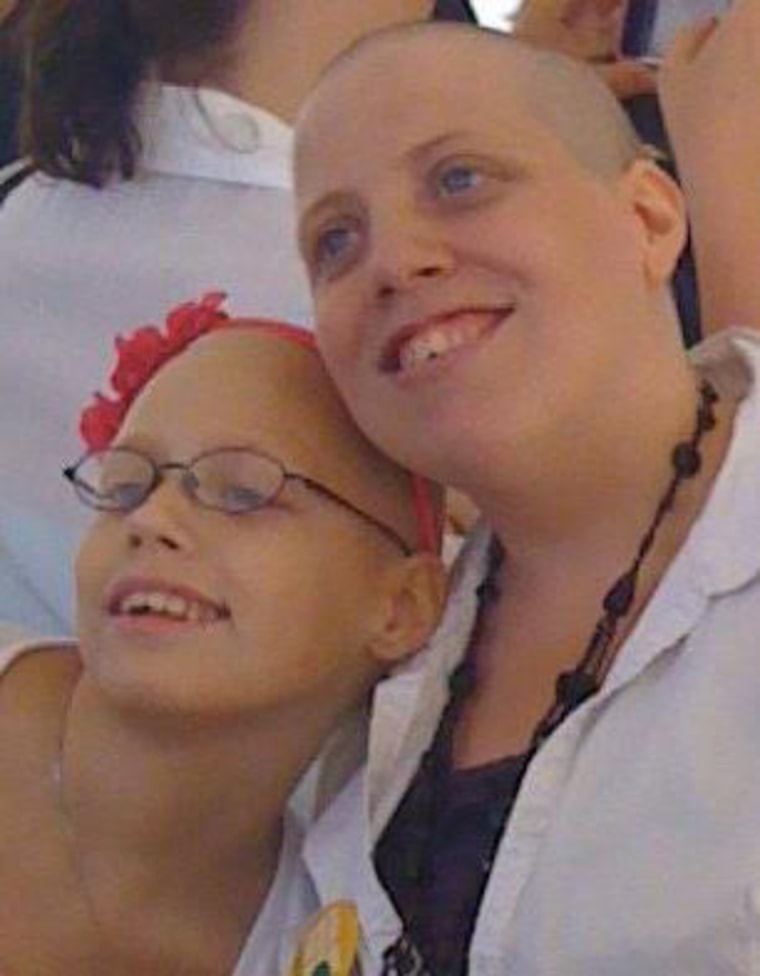Her figure may not exist in nature, but Barbie's status as a role model for young girls is undeniable.
Now a movement is afoot on Facebook to create a "Bald Barbie" as a role model for young girls going through chemotherapy or suffering from hair loss conditions such as alopecia.
"We would like to see a Beautiful and Bald Barbie made to help young girls who suffer from hair loss due to cancer treatments, Alopecia or Trichotillomania," reads the introduction to the Facebook page, Beautiful and Bald Barbie! Let's see if we can get it made.
The Facebook page, created by a group of women who either had children dealing with baldness or were dealing with it themselves due to chemotherapy, went up a few days before Christmas. As of Friday, it has more than 86,000 "likes."
"My daughter is battling leukemia right now and she's been going through chemotherapy for the last two years," says Beckie Sypin, a 32-year-old special-education teacher's aid from Lancaster, Calif., and one of the mothers responsible for the Facebook campaign.
"She was bald for about seven months and we would go to the store and people would stare or kids would ask her why she's bald. It's not something they're used to seeing. We think [a bald Barbie] would be therapeutic and I think it would help baldness become more quote unquote normal. It would be seen. It wouldn't be this odd thing that people don't have hair."
As the lobbying for a bald Barbie gained momentum, Mattel issued a statement Thursday: "We are honored that Jane Bingham and Beckie Sypin believe that Barbie could be the face of such an important cause. Mattel appreciates and respects the passion that has been built up for the request for a bald Barbie doll. As you might imagine, we receive hundreds of passionate requests for various dolls to be added to our collection. We take all of them seriously and are constantly exploring new and different dolls to be added to our line."
The statement noted that the toy company and the Mattel Children’s Foundation have donated close to $30 million and more than half a million toys to children's hospitals across the country.
Deanna Pledge, a psychologist working with children in Columbia, Mo., says a bald Barbie might indeed be helpful.
"I think having an image of a bald child or bald adult -- whether it's Barbie or not -- does promote a positive message in the mainstream," she says. "And Barbie is clearly in the mainstream."
Pledge says that even having a bald Barbie on the toy store shelves could create educational opportunities for parents and children.
"Parents might be forced to have discussions with their children as to why Barbie is bald, but I don't think that's necessarily a bad thing," she says. "There would be more people talking about it and discussing it instead of just looking at the children as different. They may feel that it's more normal and I think that could be helpful."
Sypin hopes Mattel -- or another toymaker -- will take note, though, since she feels there's a definite need for such a doll.
"I know with a lot of the girls that we've met through treatment, the cancer part isn't the part that scares them, it's the fact that they're bald," she says. "The girls cry over losing their hair."
Sypin's 12-year-old daughter, Kin Inich, wasn't one of them, however.
"She's been very good about the whole bald thing," says Sypin. "She rocks it. She has silly wigs and hats and headbands and scarves. During the summer, she was even writing on her head and putting on temporary tattoos. She didn't care that she lost her hair. But she did care that people stared at it."
Pledge, the psychologist, says she played with Barbie as a child and recalls that Mattel used to make a version of the doll with molded plastic hair and a series of fashion wigs.
"Perhaps this could be an option, too," she says. "She could wear different hats. She could wear wigs. Or she could go bald. I think that kind of role modeling -- just from her head -- would be positive. Although I think real life role models are the best options."
